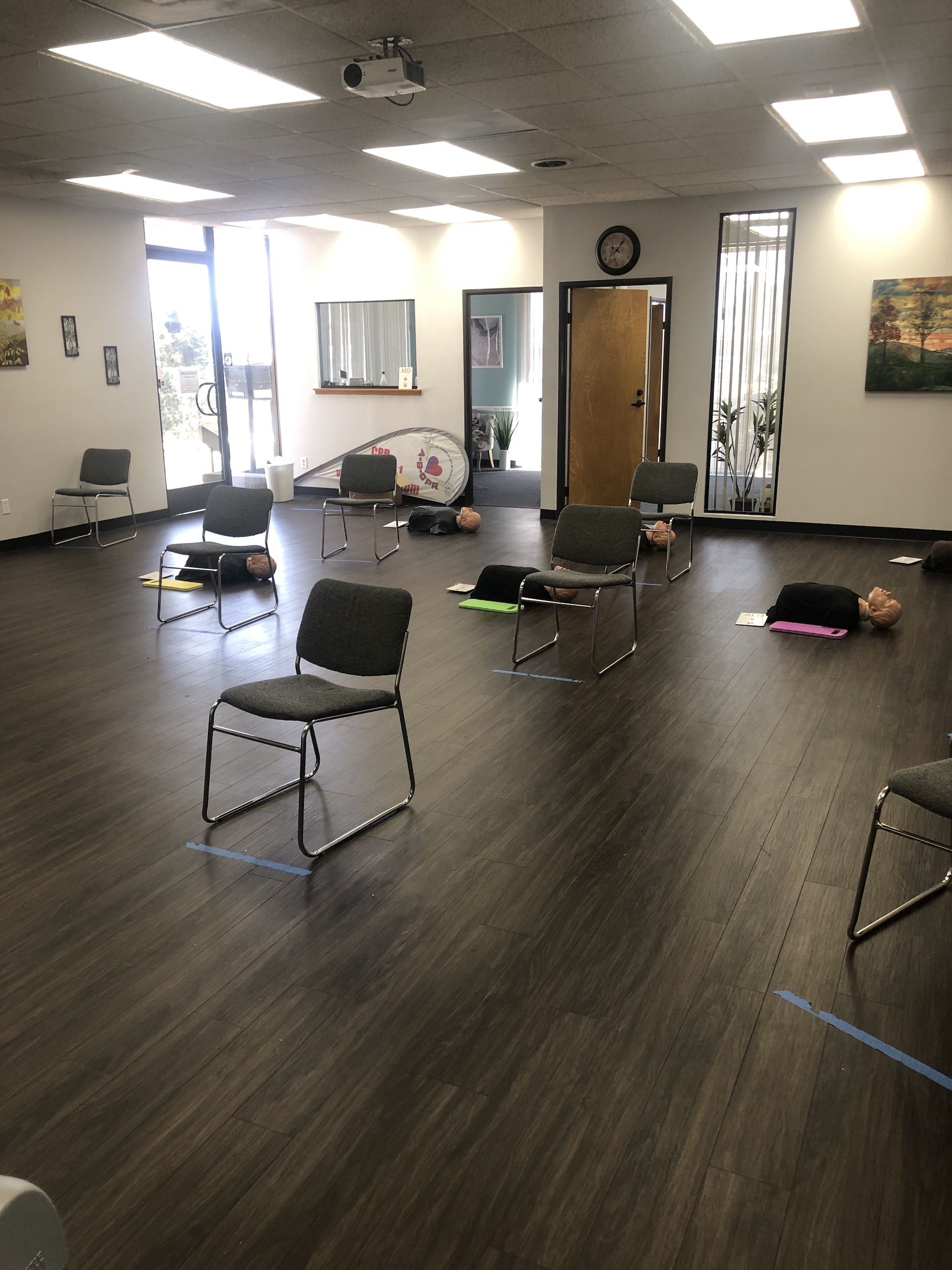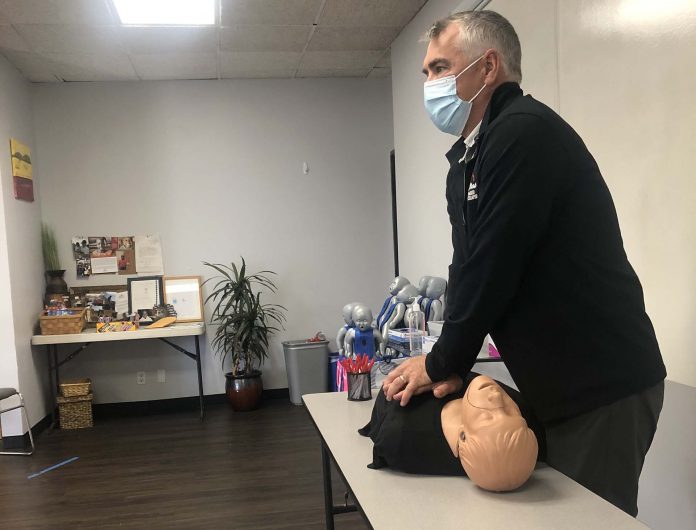School bus drivers saving choking students or performing CPR when a child becomes unconscious are heroic acts in themselves. Though those instances may be few and far between, especially amid COVID-19, school bus drivers continue to serve their communities as essential workers, delivering meals and homework packets. Without proper training, those situations could easily take a turn for the worst.
The California Department of Education reminded school officials at the start of the year that state Vehicle Code Section 12522 requires that every person who operates a school bus or youth bus to transport students complete an examination on first-aid practices.
The American Heart Association is only one of the organizations approved by the Emergency Medical Services Authority, which stated that blended course programs fulfill the state requirements.
Dr. Comilla Sasson, a practicing emergency room physician and vice-president for emergency cardiovascular care science and innovation at the American Heart Association, told School Transportation News that despite some school bus drivers not currently driving students, keeping up with training can help save lives.
“Training provides lifesaving education that equips rescuers with the skills they need,” Sasson said. “We want to make it easy for [school districts] to provide training in a safe manner.”
In doing so, the American Heart Association is offering blended training for those who cannot attend an instructor-led skills session. Sasson said individuals who choose blended can consider completing the online version of the course then complete the skills session when training sessions return to normal.
Sasson added that virtual options are becoming more permanent. “In fact, just [this month] we launched our updated Heartsaver courses for lay rescuers, or those who need certification for their jobs, and specifically built-in tools for a virtual, blended learning delivery of courses,” she explained.
Meanwhile, Oceanside Unified School District in San Diego County is finding a safe way to hold CPR training in its transportation department. The district is in the process of welcoming back all students into a hybrid model, but up until last month, drivers were supporting other departments such as child nutrition, maintenance, and operations.
Director of Transportation Karen Ballard-Sohayda said that when a bus driver turns in their California Highway Patrol Special Driver Certificate, they must also show proof that they completed first aid and CPR classes. She explained that the CHP course expires every five years, but because it includes a written test, some drivers feel more comfortable opting for the hands-on class.
While three-quarters of her driving staff is conducting the training through the CHP, Ballard-Sohayda noted that eight drivers are taking the CPR course separately. District driver instructor LeeAnn Conger said that when the training was held this past winter, all participants were socially distanced with their own mannequins.
“Before we used to team up for mannequins and have our own mouthpieces,” Conger shared. “But this time it was basically just your own mannequin, and you disinfect the mannequin before, and you disinfect the mannequin after.”

She added that course instructors and participants were required to wear a mask, so the mouth-to-mouth portion of the training was simulated to avoid the spread of germs. Conger said that the district contracted with training provider A-B-CPR this year to offer the course, which is required every two years. But Oceanside provides annual training to ensure everyone is kept up to date.
“Their service was beyond my expectations,” Conger said. “I needed to find a class quickly. [A-B-CPR owner] Mike Long was able to have an instructor come to our facility within three days. … We’ve taken many courses here at [Oceanside], and this course was by far the best. Our instructor had the ability to disseminate the critical information while still keeping it interesting and fun.”
Related: First $81B in American Rescue Plan Funds Announced During Reopening Summit
Related: School Bus Contractors Issue Latest Plea for Missing CERTS Act Funds
Related: CDC OKs 3 Feet of Distance Between Students in Classrooms
Related: COVID-19 Protocols on School Buses Eligible for American Rescue Plan Funds
Related: CARES Act Funds Student Accountability, COVID-19 Cleaning on Georgia School Buses
When discussing the importance of staying certified, Conger said, “We transport kids, whether it’s one student that we transport once a week or whether it’s a busload that we transport once a day. If you start falling behind on [first aid or CPR] when an emergency occurs you could not know what to do because you get complacent or because you haven’t done it in so long. It’s always important to have that continuing education because if something does happen on the bus. You have to be ready and prepared to do that.”
She noted that the training can be beneficial away from work, too. “If the information is there, it’s always best to stay on the ball for training, that’s why it’s required for our licensing so that we can be available to the children and the public. We are around the public all day long,” she said.
For example, Conger said that last month a driver saw an individual collapsed on the ground outside their bus facility. The driver rushed over and performed CPR. “We’re considered essential workers, so we need to be equipped to be one.”
Ballard-Sohayda concluded that amid virtual learning and not transporting as many students, additional time exists each day to offer professional development and training courses to transportation staff.
“Since the drivers are away from their buses, we don’t want them to get comfortable,” she said. “You drive a school bus, but when you’re not out driving every day, you’re not looking at your turns, not paying attention to all your lights and your distances. [Conger] finds it extremely important that she gets drivers out, she schedules them in to practice driving their buses. It’s important for us right now during COVID-19 to keep the training up.”


















